LEWISTON — Tibetan Buddhist nuns have arrived to create a mandala in the United States for the first time and to help the community recover from the trauma of the mass shooting.
The Venerable Tenzin Dasel, a Buddhist nun and spiritual adviser at Bates College, conveyed the significance of the Jangchub Choeling Nunnery’s historic visit to Lewiston.
“This is the first time in history that (Tibetan) Buddhist nuns are creating a sand mandala in the United States,” she said.
Throughout the week, the nuns will perform the laborious task of transforming innumerable brightly colored grains of sand into an elaborate and ornate Buddhist devotional image known as a mandala. Learning how to create a mandala is a challenging feat, one that only the most gifted of Buddhists can add to their arsenal of spiritual practices.

Buddhist nuns create a Buddha sand mandala Tuesday at the Peter J. Gomes Chapel at Bates College in Lewiston. They use metal funnels to guide grains of colored sand into the mandala. From left are Venerable Cungia Tsomo, Venerable Sonam Dolma and Venerable Sherab Dolma. Daryn Slover/Sun Journal
The Venerable Thukten Dema, one of the nuns from the Jangchub Choeling Nunnery in southern India, recounted that it took “the smartest among” the nuns nearly “nine months” of repetition to master the medicine Buddha sand mandala, only one type of the many mandalas the nuns have recently learned how to make.
A mandala, Dasel explained, is a tool that brings “visualizations of sacred spaces and figures” to life in three-dimensional form. Occurring during meditation, these visions are transformed into a “sacred circle” where spiritual symbols are arranged in a complex, geometric pattern. Elaborating on the iconography of the medicine Buddha mandala, Dema pointed out that it includes eight bowls to represent the eight medicine Buddha brothers.
As they work inside Bates College’s Peter J. Gomes Chapel from 9 a.m. to 5 p.m. this week, the nuns said they encourage the public to come and view the medicine Buddha sand mandala as it is being created. Those who look at the mandala with good intentions, positive thoughts and reverence will receive the blessings of the medicine Buddha regardless of their religious identity, Dema explained.
Dasel stressed that the ritual is open to everyone because it is “not about becoming a Buddhist but about becoming a better human being.”
When the sand mandala is completed Friday, the nuns will host a closing ceremony at Gomes Chapel from 5-6 p.m. At its conclusion, they will sweep away and disperse the mandala by pouring most of the sand into Lake Andrews.
Some of the sand, however, will be parceled out into small bags. While most of these keepsakes will be given to onlookers who have felt a meaningful connection with the mandala, Dasel also hopes to offer some of the sand to Just-In-Time Recreation and Schemengees Bar & Grille, the sites of last year’s mass shooting in Lewiston.
For Dasel, who helped organize the event, one of the motivations behind the mandala is to help the Lewiston-Auburn community recover from the trauma of the shooting by generating positive energy that would help cure the community’s emotional, spiritual and environmental wounds. When the nuns asked what mandala they should make for Lewiston, Dasel said she chose the medicine Buddha mandala for its healing power.
Another goal of the five-day ritual is to celebrate the nuns’ achievement as the first women to create the mandala in the U.S.
As Dasel recounted, one of her goals as an the American-born Buddhist nun is to give her fellow nuns a platform to be “spiritual leaders,” a role that has long been denied them due to their gender. For Dasel, all the nuns are feminist pioneers or, as she pointed out, “they’re like Superwomen.”
Dasel and Dema laughed as they pointed out how their signature red robes are similar to the iconic cape of the famous DC Comics’ heroine.
The biographies of these nuns reinforce their message of female empowerment. A graduate of Emory University, Dema was one of the first Buddhist nuns to attend an American university.
Until she became the first woman to pass the rigorous examination that determines which Buddhist monks and nuns get to go to university in the U.S., only Buddhist monks had been granted the privilege of receiving higher education in the U.S.

Buddhist nuns create a Buddha sand mandala Tuesday at the Peter J. Gomes Chapel at Bates College in Lewiston. They use metal funnels to guide grains of colored sand into the mandala. From left are Venerable Cungia Tsomo, Venerable Sonam Dolma and Venerable Sherab Dolma. Daryn Slover/Sun Journal
Performing the sand mandala ritual also allows Jangchub Choeling Nunnery to collect donations — a much needed source of economic support. Since Tibetan Buddhist nuns give up their material wealth and depend on their nunnery and the hospitality of others to survive, this revenue is vital in aiding the nunnery, its nuns and their mission. It also ensures they can continue spreading Buddhist teachings, traditions and rituals across the globe.
Visiting the U.S. also carries a special significance for the nuns. According to Dasel, it allows the nuns to show their support for liberal democracy.
Many of the nuns from the Jangchub Choeling Nunnery are refugees from Tibet. Because of the Chinese government’s persecution of Tibetan Buddhists, they were forced to flee their homeland and find refuge in southern India.
In addition to creating a sand mandala, the nuns will perform two additional Tibetan Buddhist rituals, the Dakini dance and the Chod-Puja, Wednesday from 6-7 p.m. They are some of the first women to perform these traditional rites as well. Following these performances, spectators can visit the medicine Buddha sand mandala — after taking their shoes off first.

Buddhist nuns Geshemia Yeshi Sangmo, left, and Lobsang Kumsel enjoy each other’s company Tuesday at the Peter J. Gomes Chapel at Bates College in Lewiston. Daryn Slover/Sun Journal
On Tuesday afternoon, the nuns performed these rituals for the first time in Lewiston. Many spectators snapped photos of the nuns and expressed their joy at being a part of the historic moment.
Alison Baird, who has been practicing Buddhism for roughly 18 years, said she’s seen the sand mandala, the Dakini dance and the Chod-Puja performed before — but only by men. Since these rituals have been the exclusive domain of monks for so long, she explained that it was almost unthinkable to imagine that women would someday get the opportunity to perform these rites as well.
Reflecting on what witnessing the first women to create a sand mandala in the U.S. meant to her, she said, “It’s really incredible … it’s wonderfully exciting to share something that profound with other women” for the first time.
Send questions/comments to the editors.

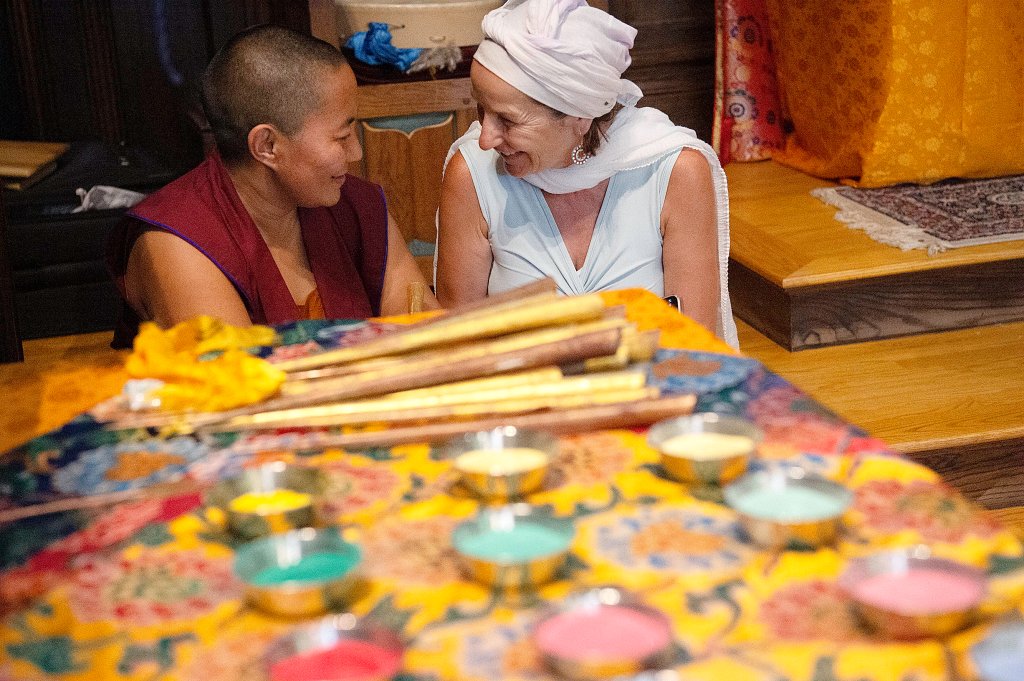
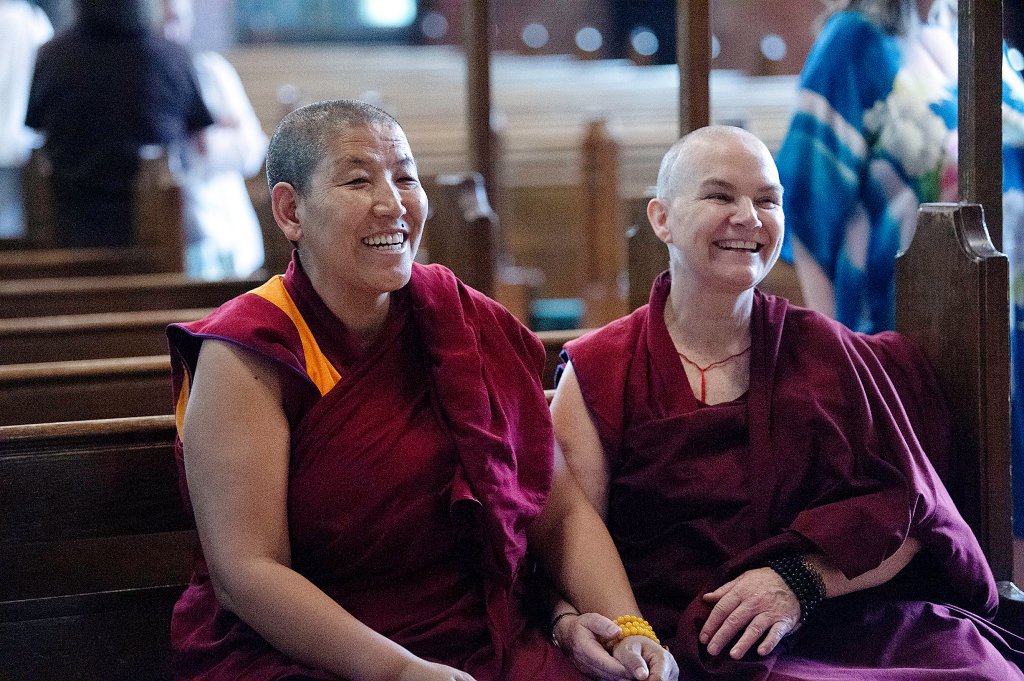
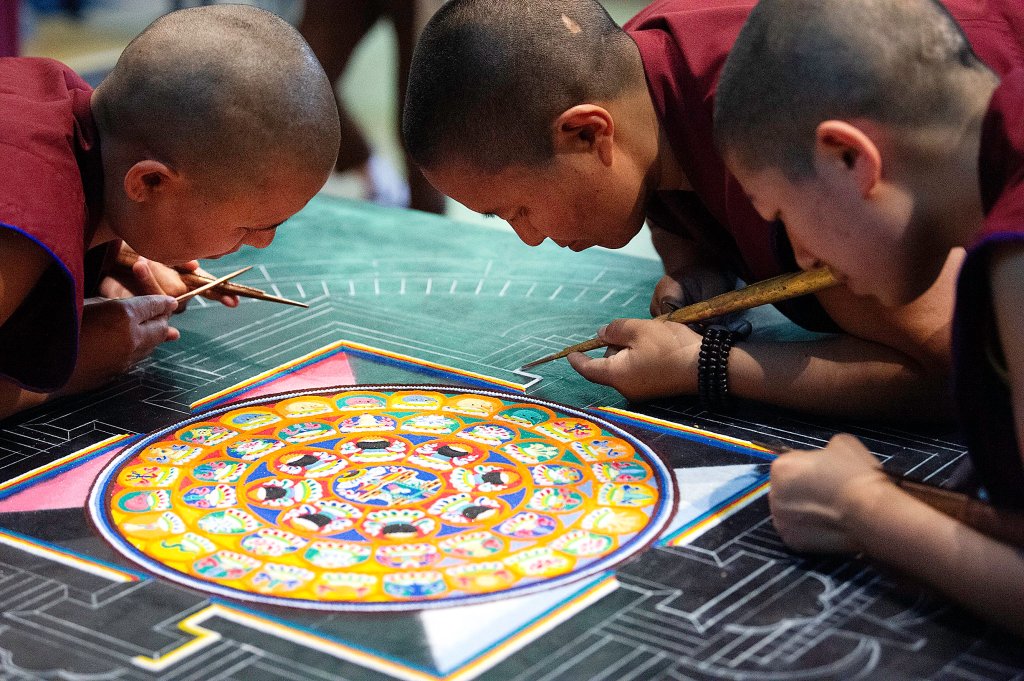
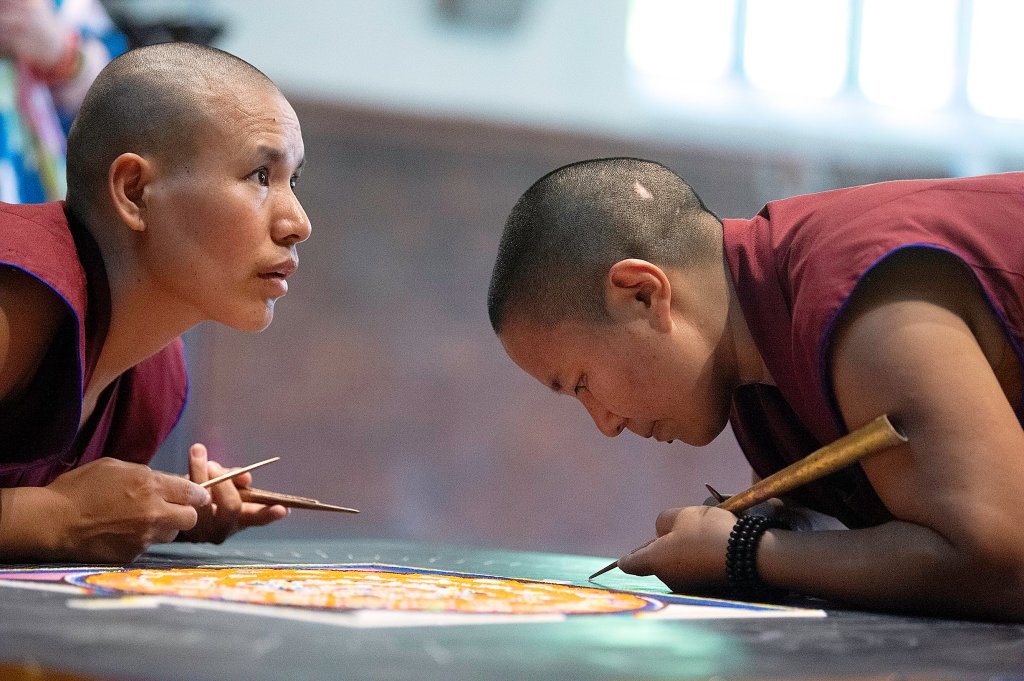
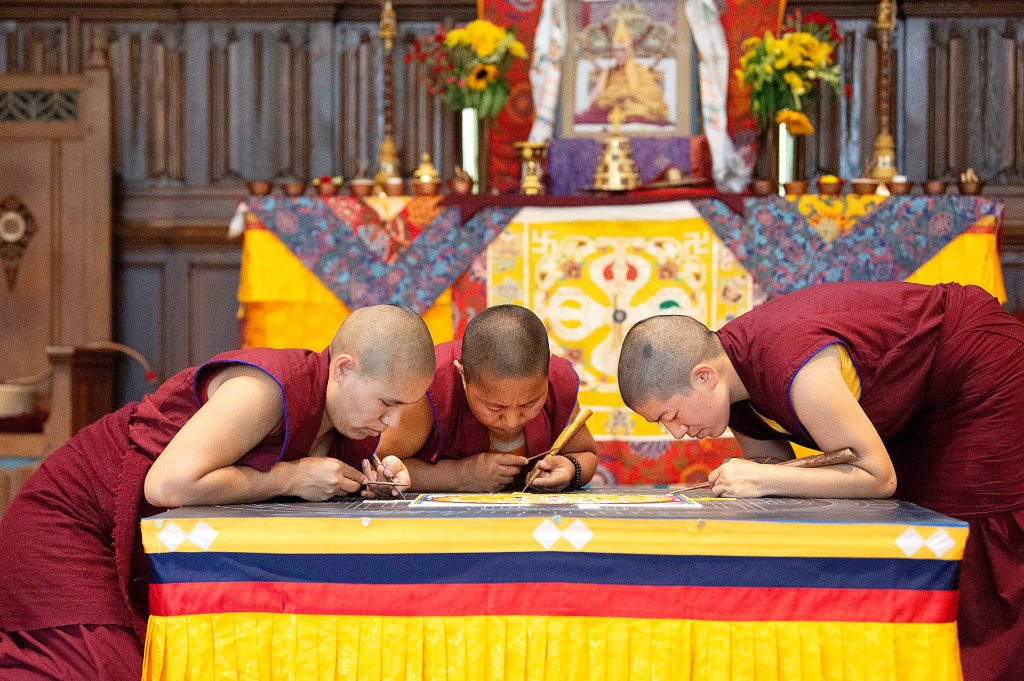
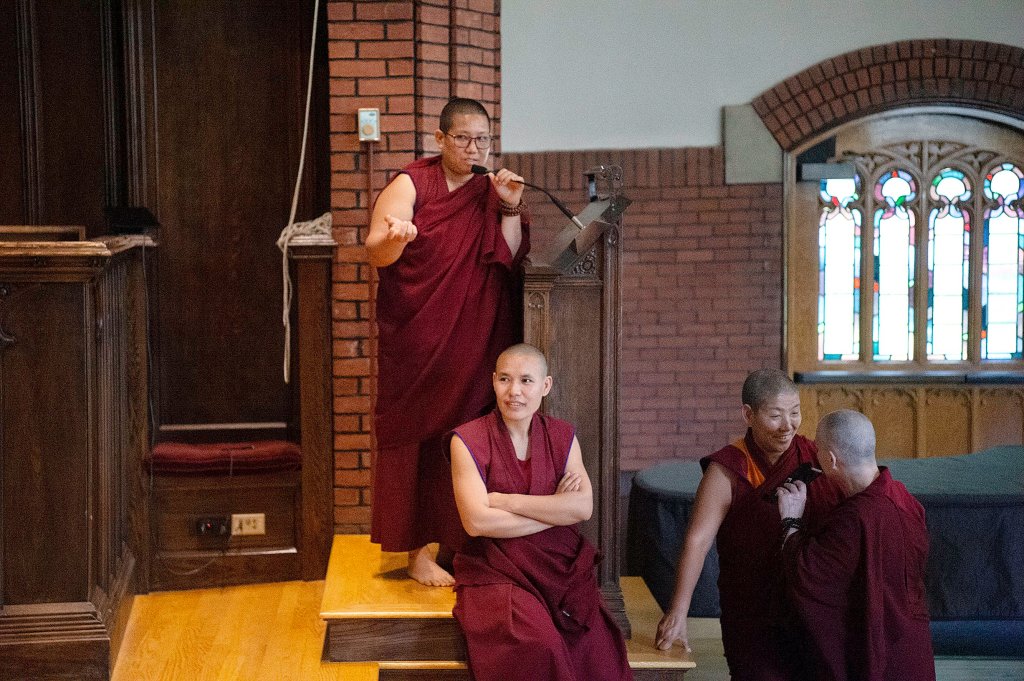
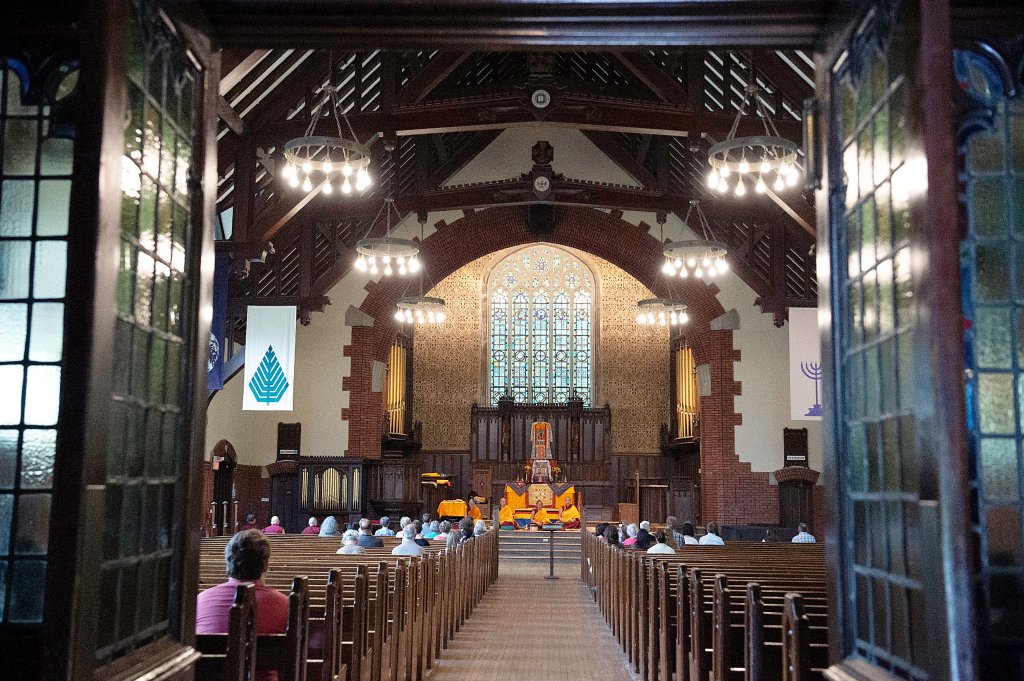


Modify your screen name
Join the Conversation
Please sign into your Press Herald account to participate in conversations below. If you do not have an account, you can register or subscribe. Questions? Please see our FAQs.